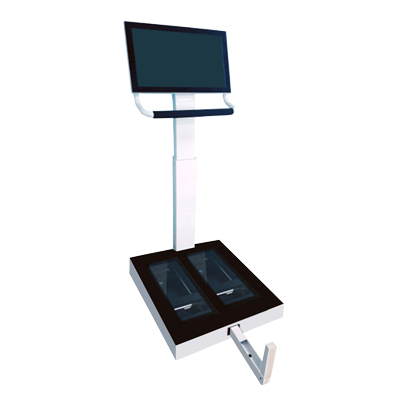Popular Searches:foot scanner | 3D scanner | 3D Printer | Design Software |


Tel :0755-86131192 86180201
Fax :0755-86180213
E-mail: [email protected]
Website: gift0755.cn
Address: 3A05, Minzhi Chamber of Commerce Building, Minzhi Avenue, Longhua District, Shenzhen
Are you here: Home > News > Industry NewsIndustry News
The First Step in Flatfoot Correction: Precise Measurement with a Foot 3D Scanner
Time:2025-01-21 14:12:00Source:深圳市精易迅科技有限公司Views:61
Flatfoot Correction Begins with Accurate Measurement: The Role of Foot 3D Scanners
Flatfoot is a common foot abnormality characterized by the collapse of the foot arch, causing the sole to almost completely contact the ground. The correction process for flatfoot typically involves diagnosis, assessment, the customization of corrective devices, and long-term foot care. Among these steps, accurate measurement of foot morphology is the foundation for designing an effective correction plan. In recent years, foot 3D scanners have emerged as advanced measurement tools, widely used in foot health evaluation, offering scientific and reliable data to support the diagnosis and correction of flatfoot.

Working Principle of Foot 3D Scanners
A foot 3D scanner is a device based on optical imaging or laser technology that quickly captures three-dimensional data of the foot's morphology. Using the scanner, the shape, dimensions, and curvature of the foot can be presented as a 3D model. Compared to traditional footprint analysis and manual measurements, this method provides higher accuracy and a comprehensive view of the foot's anatomical characteristics, including the arch height, plantar contact area, and toe alignment.
The core technologies of the scanner include high-precision sensors and advanced computational algorithms. The scanning process is typically non-contact, requiring the patient to simply stand or sit with their foot placed on the scanning platform. Within seconds, data collection is completed. This non-invasive measurement method is more patient-friendly and eliminates potential errors caused by manual operations.
Role of Foot 3D Scanners in Flatfoot Correction
Accurate Measurement of Arch Morphology
The height and curvature of the foot arch are critical indicators for assessing the severity of flatfoot. Traditional observation methods and manual measurements may result in inaccuracies due to subjective factors or lack of expertise. Foot 3D scanners, however, utilize three-dimensional imaging to precisely calculate geometric parameters of the arch, providing reliable data for subsequent correction plans.
Personalized Foot Data Collection
Each individual has unique foot morphology, making it essential to develop personalized correction plans for flatfoot. Foot 3D scanners can comprehensively capture foot details, including length, width, curvature, and specific structural variations. These data form the basis for customizing corrective insoles or footwear tailored to the patient’s specific needs.
Combining Static and Dynamic Assessments
Some foot 3D scanners offer dynamic assessment capabilities, recording foot morphology changes during walking. By integrating static and dynamic data, healthcare professionals can gain a more holistic understanding of the patient’s foot issues and develop more precise intervention strategies.
Advantages of Foot 3D Scanners
- High Precision: Scanners can achieve millimeter-level or even higher measurement accuracy, ensuring reliable diagnostic and assessment results.
- Efficiency: Traditional manual measurements are time-consuming and often require repeated adjustments. A 3D scanner completes the entire foot scan in just a few seconds, significantly improving workflow efficiency.
- Data Visualization: The 3D models generated by the scanner allow both patients and doctors to intuitively see the foot's morphology, making it easier to understand the issues.
- Digital Storage and Analysis: Scan data can be stored digitally for further analysis and long-term monitoring. This also provides a historical reference for adjusting the patient’s correction plan.
Practical Applications in Flatfoot Correction
In clinical practice, foot 3D scanners help doctors design personalized correction plans for flatfoot patients. For instance, scanning data can be used to create customized corrective insoles or shoes that match the patient’s foot morphology. Additionally, the scanning data can monitor the effectiveness of correction over time by comparing pre- and post-correction foot models, enabling the evaluation of treatment progress and outcomes.
As an essential tool in modern foot health assessment, foot 3D scanners play an irreplaceable role in flatfoot correction. Their high precision, efficiency, and ability to collect personalized data provide a scientific foundation for diagnosing and correcting flatfoot. By leveraging this advanced technology, doctors can evaluate patients' foot morphology with greater accuracy and develop practical, effective correction plans, helping patients take confident and comfortable steps forward.



